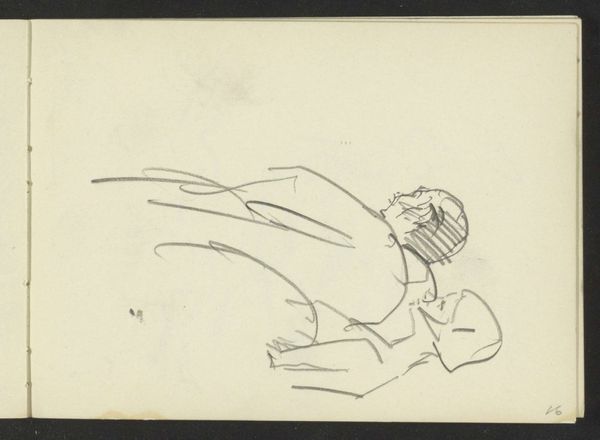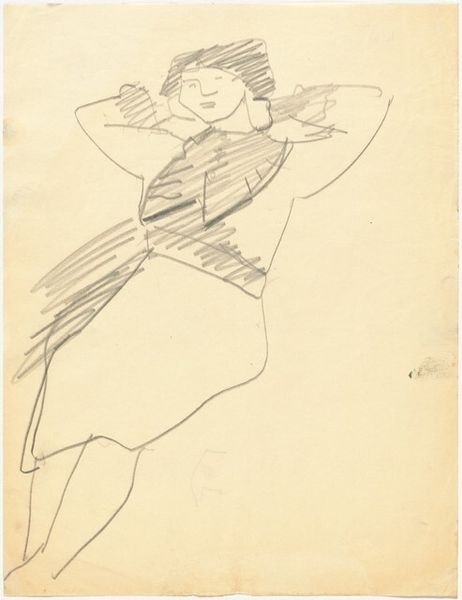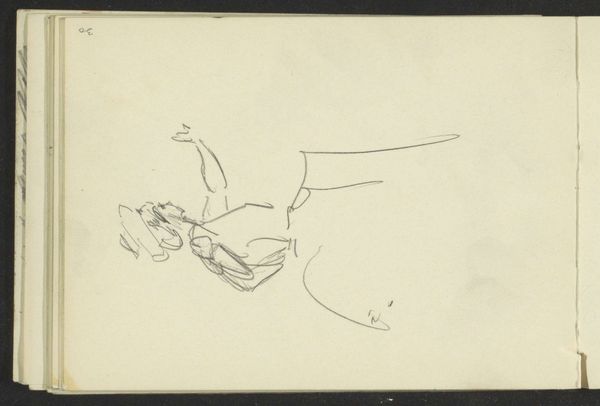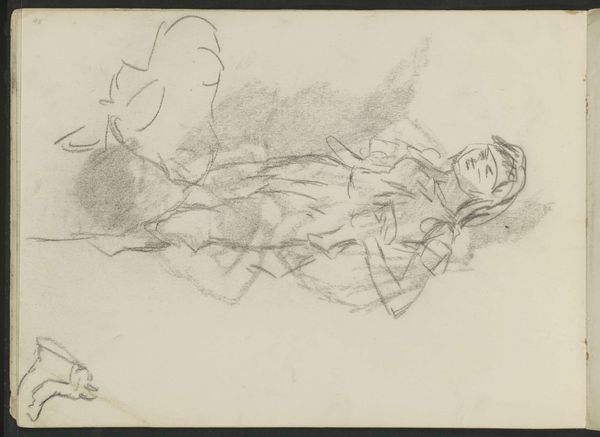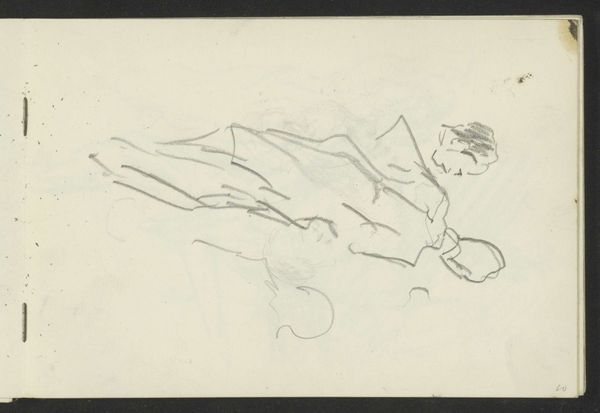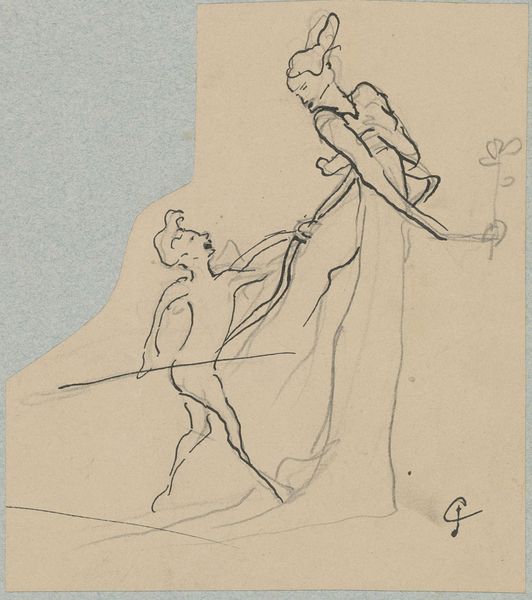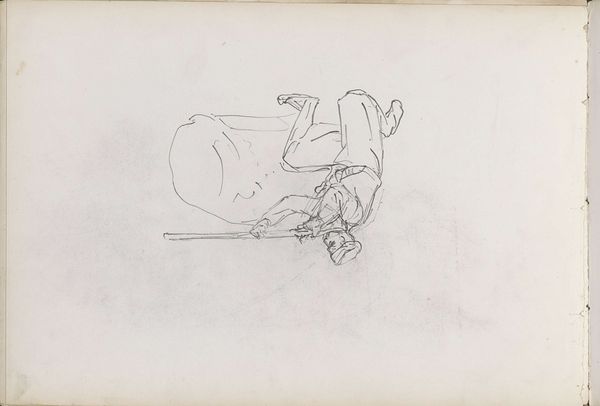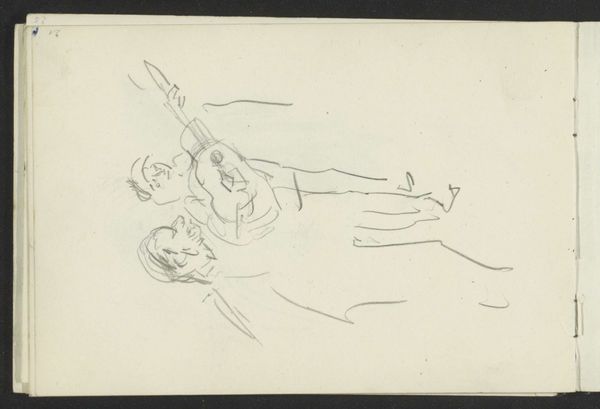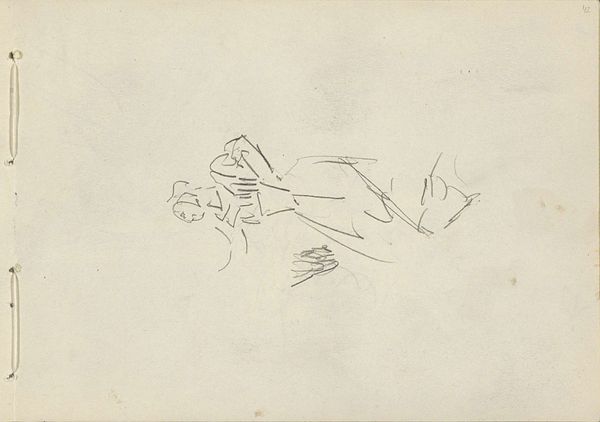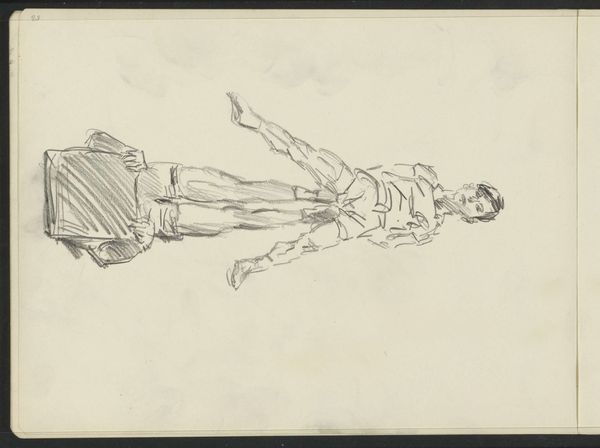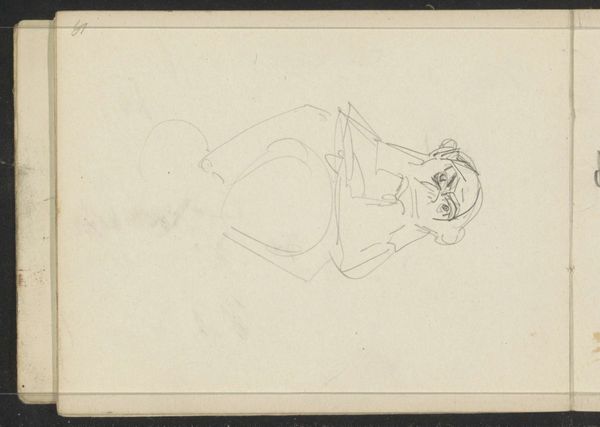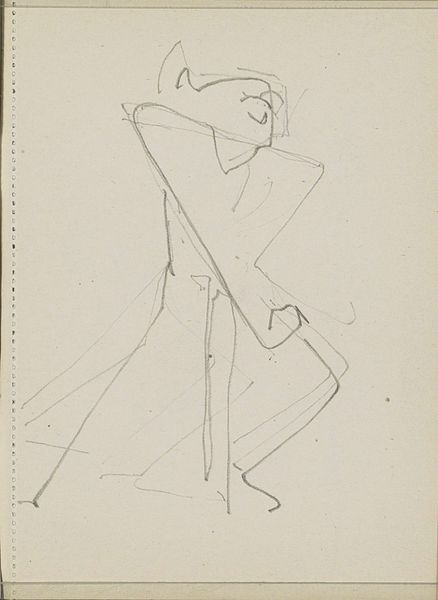![Reclining Female Figure, Head Turned Left [verso] by Mark Rothko](/_next/image?url=https%3A%2F%2Fd2w8kbdekdi1gv.cloudfront.net%2FeyJidWNrZXQiOiAiYXJ0ZXJhLWltYWdlcy1idWNrZXQiLCAia2V5IjogImFydHdvcmtzLzNjZThhNzU5LTg4NWMtNDVmNi05ZjRmLWUwNDg1Y2ViMTQ4MC8zY2U4YTc1OS04ODVjLTQ1ZjYtOWY0Zi1lMDQ4NWNlYjE0ODBfZnVsbC5qcGciLCAiZWRpdHMiOiB7InJlc2l6ZSI6IHsid2lkdGgiOiAxOTIwLCAiaGVpZ2h0IjogMTkyMCwgImZpdCI6ICJpbnNpZGUifX19&w=1920&q=75)
drawing, ink
#
portrait
#
drawing
#
ink drawing
#
figuration
#
ink
#
line
Dimensions: sheet: 22.86 × 29.85 cm (9 × 11 3/4 in.)
Copyright: National Gallery of Art: CC0 1.0
Curator: Welcome. Today, we're observing "Reclining Female Figure, Head Turned Left," a compelling ink drawing by Mark Rothko. It is important to view such representational pieces as precursors to Rothko's later, more celebrated abstract works, showcasing his formal skills. Editor: It has a breezy confidence to it, almost unfinished. There is such ease to her pose. It's compelling as this is not what one expects when thinking of Rothko. Curator: Rothko's early work, though different from his iconic color fields, remains crucial to understanding his artistic trajectory. His figurative works explore form and expression and engage with art history differently than his later paintings. Editor: Looking at it now, it evokes those interwar sentiments of liberation that are intrinsically bound to depictions of reclining women. You cannot help but draw the immediate contrast to his more famous color-field paintings where representation disappears. It makes me think about who is permitted to occupy what space. Curator: Precisely. It highlights the crucial role of academic and traditional training in forming an artist’s visual vocabulary and broader outlook. In that sense it's an artifact of artistic development in early to mid 20th century America, before abstraction fully took hold. Editor: But don't you think this portrait challenges conventional objectification by presenting a figure with a clear gaze? Rothko, whether consciously or not, contributes to disrupting this problematic paradigm, or does he merely reinscribe the traditions of female depiction for male viewers? Curator: Those considerations are very valid; they highlight how artistic production and consumption occur within specific social and historical contexts. It shows Rothko attempting to negotiate that himself. The fact he is negotiating that representation—through something as fleeting as an ink sketch—is highly relevant to how we must think about this artist. Editor: I completely agree. It's almost like capturing a moment, before he became "Rothko." What’s exciting is to then apply that understanding to reinterpreting the intentions of his non-objective work. Curator: It's vital we approach these works with awareness of the historical context and broader systems of artistic practice. We trust that such insights deepen our understanding. Editor: Definitely, by constantly questioning we allow our viewing of art to be an act of emancipation. It allows us to see art with fresh eyes, beyond just its aesthetic appeal.
Comments
No comments
Be the first to comment and join the conversation on the ultimate creative platform.
